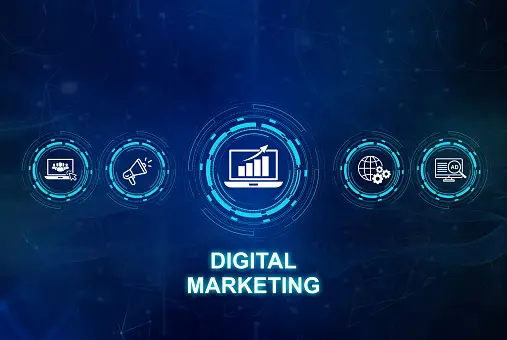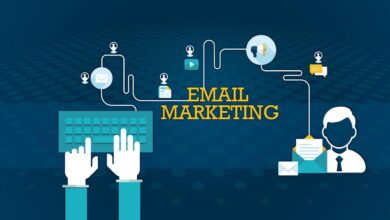Maximizing Ad Revenue: Your PPC Optimization Toolkit 2025

The digital advertising landscape has always been a high-stakes environment, but as we enter 2025, Pay-Per-Click (PPC) optimization has evolved from an art into a highly technical science. The competition for premium ad placements, particularly across Google Ads and its subsidiaries, is fiercer than ever. For content publishers relying on Google AdSense, understanding and leveraging the same advanced optimization tools used by premium advertisers is critical. These tools not only help advertisers bid smarter but also reveal high-value keywords and content gaps that can be exploited for massive organic (and therefore, AdSense) gains.
This extensive guide delves into the essential PPC optimization tools and strategies for 2025. We will explore how these powerful software solutions maximize campaign efficiency, analyze competitor ad spend, and, most importantly, provide the intelligence needed to attract the most lucrative, high CPC (Cost-Per-Click) traffic to your monetized content.
Competitive Intelligence: The Core of High CPC Strategy

In the world of PPC and AdSense, knowledge of your competitors’ spending habits is power. High CPC keywords are driven by advertisers with deep pockets and high customer lifetime value (CLV)—typically found in niches like Finance, Legal, and B2B SaaS. Advanced competitive intelligence (CI) tools are the secret weapon to cracking these lucrative segments.
A. Uncovering Competitor Ad Strategy and Budget
Modern CI tools go far beyond simply showing competitor keywords; they analyze their entire ad funnel and budget allocation.
1. Budget Estimation and Trend Analysis
Tools now use sophisticated algorithms to estimate a competitor’s monthly ad spend across various platforms (Search, Display, Shopping). This reveals which competitors are serious players in high-value niches (e.g., “Best life insurance policy” or “Business loan for bad credit”).
They track historical spending trends, allowing publishers to predict when competitors might scale up (e.g., tax season for financial keywords or end-of-quarter for B2B software).
2. Ad Copy Deconstruction
Analyzing thousands of competitor ad copies reveals their unique selling propositions (USPs) and their highest-converting calls-to-action (CTAs).
For content publishers, this intelligence is gold: it dictates the precise angle your organic article must take to attract that same high-intent, transactional traffic. If competitors advertise “Free Consultation,” your article should highlight the need for expert advice.
3. Landing Page Funnel Mapping
The most advanced tools map the sequence of pages a user sees after clicking a competitor’s ad. By analyzing these high-converting landing pages, you can reverse-engineer the conversion intent required to satisfy the user who is searching those high-CPC terms. Your AdSense-monetized article must mirror this serious, conversion-focused mindset.
B. The Spy Tool Stack for 2025
The three primary categories of intelligence tools essential for high AdSense revenue are:
1. All-in-One SEO/PPC Suites (e.g., Semrush, Ahrefs)
These remain foundational, providing unified keyword, organic, and paid data. Their unique value lies in the Keyword Gap Analysis between paid and organic efforts.
2. Dedicated Ad Intelligence Platforms (e.g., SpyFu, Adbeat)
These focus purely on competitor ad spend, copy, and creative assets, offering unparalleled depth in PPC strategy.
3. Bid Management and Automation Platforms
While primarily for advertisers, their Performance Max (PMax) and Smart Bidding features indicate which ad formats and audience segments are currently driving the highest conversion value—a crucial signal for content targeting.
Keyword and Intent Optimization for Maximum CPC

A high CPC is a direct payment for high user intent. The goal is to move away from informational keywords (like “what is insurance”) and toward transactional or commercial investigation keywords (like “compare term life insurance tools“). PPC optimization tools are the best source for this high-value data.
A. Mining the “Money Keywords” from PPC Data
The single most valuable function of a PPC tool for an AdSense publisher is the ability to filter keywords by estimated top-of-page bid (CPC).
1. The $50+ CPC Filter
Focus your content creation efforts exclusively on keywords with an average CPC exceeding a high threshold (e.g., $50). These are the phrases where advertisers are confident in a high-value return.
2. Commercial Intent Modifiers
High CPC is often linked to specific words. Tools help identify keywords containing: “Best, Top, Reviews, Compare, Service, Platform, Software, Tool, Advisor, Consultation, Hire.” Your article title and headings must include these modifiers to attract the highest-paying ads.
3. Negative Keyword Analysis
Advertisers meticulously manage their negative keyword lists (terms they don’t want to rank for) to prevent wasted spend. Analyzing these lists in CI tools reveals low-intent phrases that you, as a publisher, should also avoid focusing on to maximize high-quality traffic.
B. Targeting Niches Where CPC Soars
PPC tools confirm which verticals consistently offer the highest ad revenue potential:
1. Insurance
Auto, health, life, and commercial insurance. Advertisers pay astronomical amounts because one sale is worth thousands.
2. Legal
Injury claims, malpractice, divorce, and corporate law. Localized, high-intent legal searches command the highest global CPCs.
3. Financial Services
Mortgages, high-end credit cards, corporate financing, and investment advising platforms.
4. Specialized B2B Software (SaaS)
Tools for enterprise resource planning (ERP), Customer Relationship Management (CRM), and cloud security solutions, where subscription values are high.
Ad Creative and Placement Analysis for Content Structuring
The way an ad is written and where it is displayed reveals the advertiser’s best practices. Your content structure should mimic this high-converting format to keep users engaged and the ad units visible.
A. The Anatomy of a High-Converting Ad and Content Piece
PPC tools show which ad copy variations perform best. This dictates the structure of your winning AdSense article:
1. The Headline Hook
Successful ad headlines feature urgency, numbers, or a strong USP. Your article’s H1 title should reflect this punchiness (e.g., “7 Best CRM Tools to Double Sales”).
2. Structured Body Copy
Ad descriptions are concise and bulleted. Your article’s body copy should use extensive bullet points (UL) and numbered lists (OL) to make the content scannable, engaging, and ad-friendly.
3. Clear Call-to-Action (CTA) Equivalents
The ad’s CTA (e.g., “Apply Now,” “Get a Quote”) should be satisfied by the content itself, which means your article should provide a definitive comparison or ranking that helps the user take the next step.
B. Optimizing AdSense Placement (Inferred from PPC Data)
While you don’t control the AdSense ads themselves, you control the content environment. PPC insights guide optimal placement:
1. Above the Fold for High-Intent
Since high CPC ads are usually shown at the top, the primary conclusion or ranking of your “best tools” article should be mentioned high up, making the user see the most valuable content (and the highest-paying ad unit) immediately.
2. Mid-Content Review Blocks
Successful PPC ads are often displayed between comparison points. Your content should feature dedicated review blocks or spec sheets for individual tools, creating natural breaks where AdSense units can be seamlessly and effectively placed.
Technical Optimization Tools and Their PPC Integration
Technical SEO and site speed are foundational to high AdSense revenue, as poor performance leads to high bounce rates and low ad viewability. Modern tools link PPC efficiency with technical standards.
A. Core Web Vitals (CWV) and Page Speed Tools
Advertisers rigorously track landing page speed because every millisecond of delay correlates to a drop in conversion rate. Publishers must adopt the same standards.
1. Lighthouse and PageSpeed Insights Integration
These free but powerful tools are crucial. They provide quantifiable metrics on how fast your high-CPC content pages load. Slow speeds mean users bounce before the AdSense ad fully loads or is visible.
Focus on reducing LCP (Largest Contentful Paint)—the time it takes for the main content block (your high-value article review) to appear.
2. Technical Audit Tools (e.g., Screaming Frog, Sitebulb)
These crawling tools identify technical debt like broken links, slow server response times, and incorrect canonical tags. Clean technical health ensures Google indexes your high-CPC pages correctly and prioritizes them for rapid display.
B. Mobile Experience Optimization
PPC campaigns are overwhelmingly mobile-first. Your AdSense site must be too.
1. Mobile-First Indexing Check
Ensure your technical tools confirm that your site is fully optimized for mobile devices. Adsense revenue is highly reliant on mobile ad placements.
2. INP (Interaction to Next Paint) Focus
The newest CWV metric, INP, measures responsiveness. High-intent users expect immediate feedback. Optimization tools focusing on JavaScript and CSS delays are paramount for ensuring users can interact with your content (and your ads) instantly.
Automation and Scalability in PPC-Driven Content Strategy
To stay ahead in 2025, publishers must utilize automation to scale their high-CPC content creation and maintenance.
A. Leveraging AI Writing and SEO Tools
AI is no longer just a trend; it’s a necessary tool for scaling authority content.
1. Topic Cluster Generation
Use AI tools that analyze the top-ranking pages for a high-CPC keyword and generate a comprehensive map of all related sub-topics and questions that must be addressed to achieve topical authority.
2. Content Rewriting and Uniqueness Check
For high-volume production, Generative AI tools can quickly draft unique content variations based on high-performing competitor ad copy and landing page text, ensuring every piece targets the high-value intent perfectly while passing plagiarism checks.
3. Schema Markup Automation
SEO content tools automatically insert structured data (Schema) for reviews, product comparisons, and FAQs. This helps Google’s crawlers categorize your content as highly structured, relevant, and authoritative, increasing the chance of serving high-quality, high-CPC ads.
B. Ongoing Monitoring and Refinement
PPC campaigns are constantly tested and refined. Your content must be too.
1. Ranking and Traffic Monitoring Tool
Utilize tools like Google Search Console and dedicated rank trackers to monitor traffic changes on your high-CPC pages daily. A drop in traffic often means a competitor launched a more aggressive PPC or organic campaign that you need to counter.
2. AdSense Revenue Reporting Correlation
The best publishers correlate organic traffic drops or gains with changes in AdSense CPC and eCPM data. If a page’s eCPM drops, it signals that the advertiser pool for that keyword has changed, indicating a need to refresh the content with new high-value tool reviews or comparison data.
3. Content Decay Alerts
Set up automated alerts in your SEO suites to notify you when the traffic or keyword ranking for a high-value content piece begins to decay, allowing for immediate refresh and update, preventing the loss of vital ad revenue.
Case Study Niche Deep Dive: B2B Financial Software Tools
To illustrate the strategy, consider the highly lucrative “B2B Financial Software” niche.
A. Keyword Target Selection
Using a PPC intelligence tool, you would identify keywords with CPCs exceeding $80:
A. “Best ERP software for manufacturing 2025”
B. “Top Accounts Payable Automation platform reviews”
C. “Compare commercial loan management tools”
B. Competitor Analysis Insights
CI tools show major software vendors (e.g., SAP, Oracle, niche fintech companies) are spending tens of thousands monthly.
1. Ad Copy Focus
Their ad copy consistently emphasizes ROI, integration, and security. Your content must dedicate sections to these topics.
2. Landing Page Structure
Their landing pages feature a clear comparison chart, a cost calculator, and client testimonials. Your content should prominently feature comparison tables and simulated ROI calculations.
C. Content Structure and AdSense Mapping
Your 3000-word article, titled “Top 7 Finance Automation Platforms: An Unbiased Review,” would be structured as follows:
1. Directly addresses the keyword and promise.
2. Introduction (Above the Fold): Acknowledge the high cost of manual processes (the pain point) and immediately introduce the Top 3 Tools (the high-CPC magnet).
3. Dedicated Tool Review Blocks: Separate H2/H3 blocks for each of the seven platforms.
4. Comparison Table: A visually appealing table summarizing all features and pricing in one place.
5. FAQ Section: Address long-tail informational questions that still contain high-CPC modifiers (e.g., “Which ERP platform has the best mobile tool?”).
This strategic alignment ensures that you attract the precise, high-intent user that sophisticated advertisers are paying top dollar to reach, thus maximizing your AdSense revenue per visitor.
Conclusion
The path to maximizing Google AdSense revenue in the high-stakes environment of 2025 is unequivocally tied to mastering the PPC optimization toolkit. These advanced software solutions are no longer optional accessories for publishers; they are the fundamental intelligence layer that dictates competitive advantage. They bridge the critical gap between organic content creation and paid advertising profitability by revealing the exact keywords, intent structures, and creative formats that command the highest Cost-Per-Click.
The core of this strategy lies in competitive intelligence—the ability to reverse-engineer the multi-million dollar ad strategies of industry leaders in finance, legal, and B2B tech. By filtering keywords for an average CPC exceeding a high threshold, analyzing the language used in top-performing ad copy, and understanding the user journey on high-converting landing pages, publishers gain an unassailable edge. This intelligence directly informs the structure of your content, leading to the creation of long-form, authority-building articles that meticulously detail tool reviews and platform comparisons, which are the very anchors that attract and hold the most lucrative AdSense ads.
Furthermore, a future-proof strategy requires dedication to technical excellence, utilizing tools to monitor and maintain Core Web Vitals and mobile responsiveness—factors that directly influence ad viewability and user retention. By integrating AI for scaling content creation and automating schema markup for better structured data, publishers ensure their content is authoritative, technically sound, and perfectly aligned with Google’s sophisticated ranking systems. Ultimately, the successful AdSense publisher of today is not just a writer, but an astute digital strategist who uses the power of PPC optimization tools to systematically target, capture, and monetize the most valuable corners of the search engine market. The investment in these high-end tools yields a compounded return, transforming organic traffic from a modest trickle into a high-octane revenue stream.


